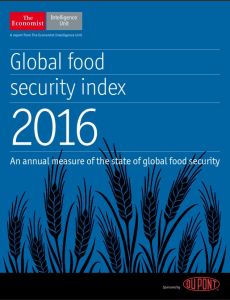Join getAbstract to access the summary!

Join getAbstract to access the summary!
The Economist Intelligence Unit
Global Food Security Index 2016
An Annual Measure of the State of Global Food Security
EIU, 2016
What's inside?
The 2016 Global Food Security Index reveals both positive and negative trends.
Recommendation
The 2016 edition of the Global Food Security Index from the Economist Intelligence Unit reveals that food security worldwide continues to make advances, mostly driven by rising incomes. But affordability and availability remain significant problems for policy makers and private-sector organizations to address. Political instability often begets food insecurity, and climate change portends unpredictable effects on food supplies. getAbstract recommends the EIU’s useful compendium of information to analysts, government officials and others concerned about trends in agricultural production, distribution, quality and prices.
Summary
About the Author
The Economist Intelligence Unit is an independent research and analysis organization.






















































































































Comment on this summary